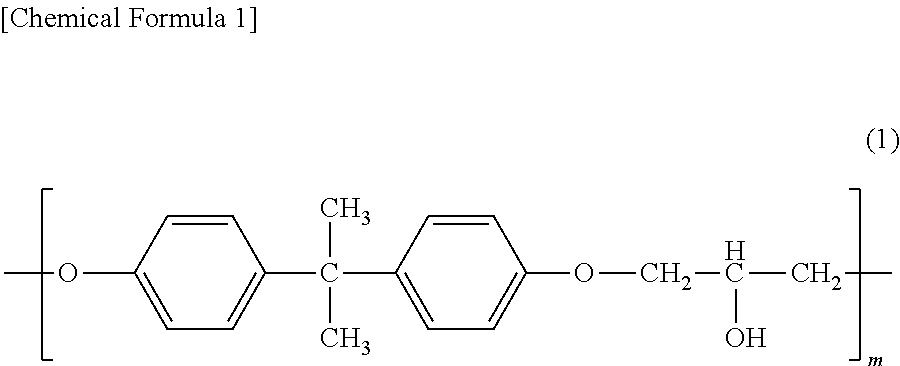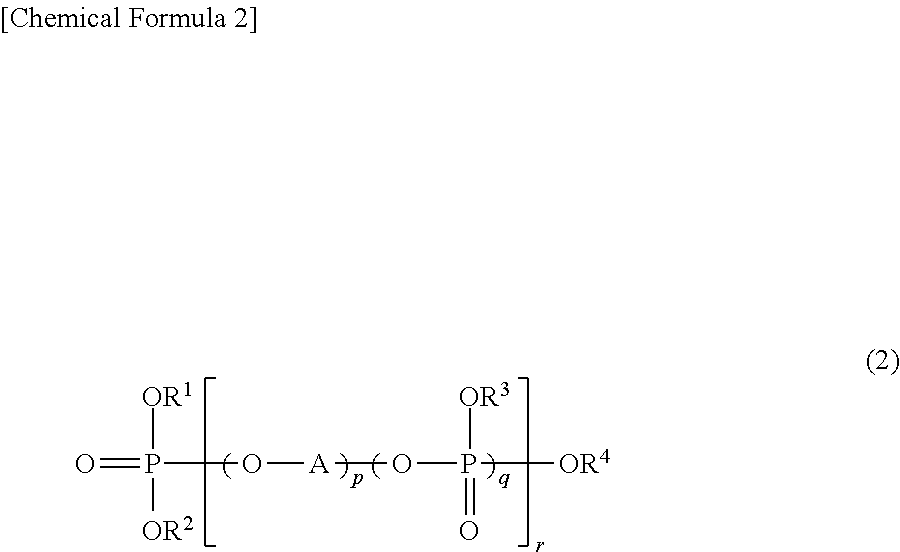Reinforced Thermoplastic Resin Composition And Molded Article
a thermoplastic resin and composition technology, applied in the field of reinforced thermoplastic resin composition and molded articles, can solve the problems of low rigidity, inability to meet the demands of thinning the housing, and inability to use a wireless lan type mobile device, etc., to achieve high flame retardancy, high rigidity, impact resistance, and high rigidity.
- Summary
- Abstract
- Description
- Claims
- Application Information
AI Technical Summary
Benefits of technology
Problems solved by technology
Method used
Image
Examples
examples
[0195]Hereunder, specific examples are shown. The present invention is in no way limited by these Examples. In the following description, the units “parts” and “%” refer to “parts by mass” and “% by mass”, respectively.
[0196]
[0197][Acetone Soluble Fraction]
[0198]2.5 g of a graft copolymer was immersed in 90 ml of acetone, heated at 65° C. for 3 hours, and then centrifuged at 1,500 rpm for 30 minutes by using a centrifugal separator. Then, the supernatant was removed and the residue was dried at 65° C. for 12 hours in a vacuum drier, and the resulting sample after drying was precisely weighed. From the mass difference (namely, (2.5 g)−(mass of the sample after drying)), the ratio (%) of the acetone soluble fraction in the graft copolymer was determined. The reduced viscosity of the acetone-soluble fraction was measured at 25° C. by adjusting with an N,N-dimethylformamide solution so that the concentration of the acetone-soluble fraction was 0.2 g / dl.
[0199][Charpy Impact Strength]
[020...
examples 1 to 28
, Comparative Examples 1 to 23
[0296]Each of the components described above was mixed, as indicated in Tables 1 to 8, to obtain a reinforced thermoplastic resin composition.
[0297]The moldability of the resulting reinforced thermoplastic resin compositions and the Charpy impact strength, flexural strength, flexural modulus, flame retardancy and heat resistance of the resulting molded articles were evaluated. The evaluation results are shown in Tables 1 to 8.
TABLE 1Example No.1234567ReinforcedCA-1%93949598999595thermoplasticB1-1%resinB1-2%compositionB1-3%B1-4%7652155E-1Parts8E-2Parts88888E-3Parts8E-4PartsE-5PartsE-6PartsF1-1Parts1111111F1-2PartsF2-1Parts22222222222222F2-2PartsF2-3PartsG-1Parts0.050.050.050.050.050.050.05G-2PartsG-3PartsI-1Parts0.8D-1Parts108108108108108108108D-2PartsD-3PartsD-4PartsRatio of D in%45454545454545reinforcedthermoplasticresincompositionCharpy impactkJ / m215171816151717strengthFlexural strengthMPa224225245241238224232Flexural modulusMPa13100132001350013600137...
PUM
| Property | Measurement | Unit |
|---|---|---|
| Percent by mass | aaaaa | aaaaa |
| Percent by mass | aaaaa | aaaaa |
| Percent by mass | aaaaa | aaaaa |
Abstract
Description
Claims
Application Information
 Login to View More
Login to View More - R&D
- Intellectual Property
- Life Sciences
- Materials
- Tech Scout
- Unparalleled Data Quality
- Higher Quality Content
- 60% Fewer Hallucinations
Browse by: Latest US Patents, China's latest patents, Technical Efficacy Thesaurus, Application Domain, Technology Topic, Popular Technical Reports.
© 2025 PatSnap. All rights reserved.Legal|Privacy policy|Modern Slavery Act Transparency Statement|Sitemap|About US| Contact US: help@patsnap.com


